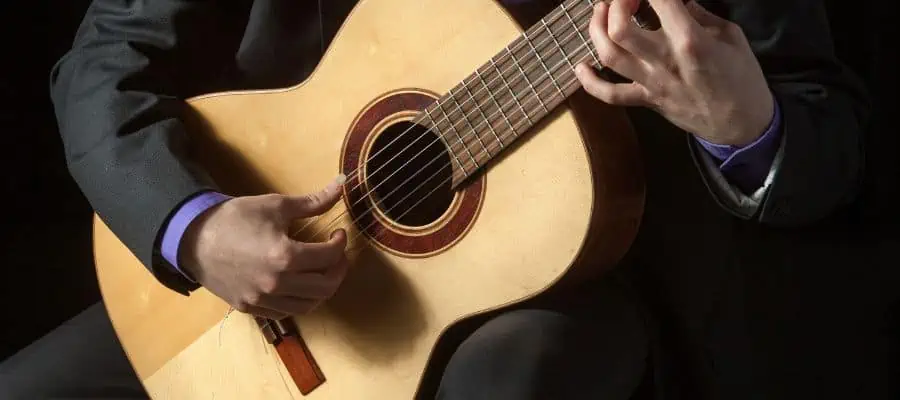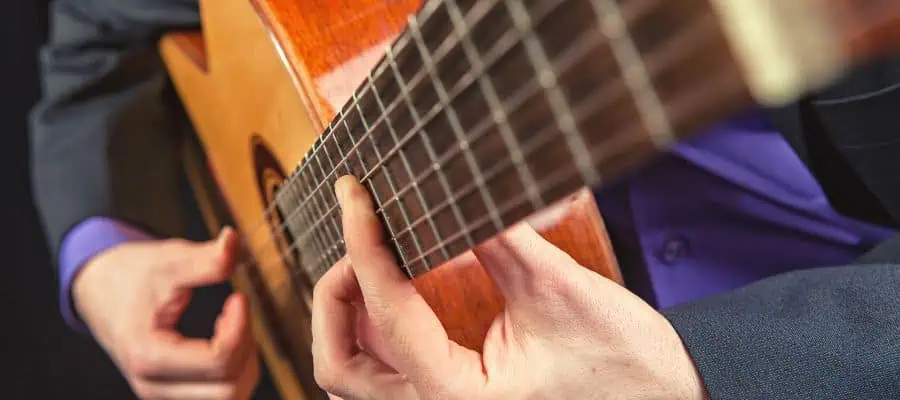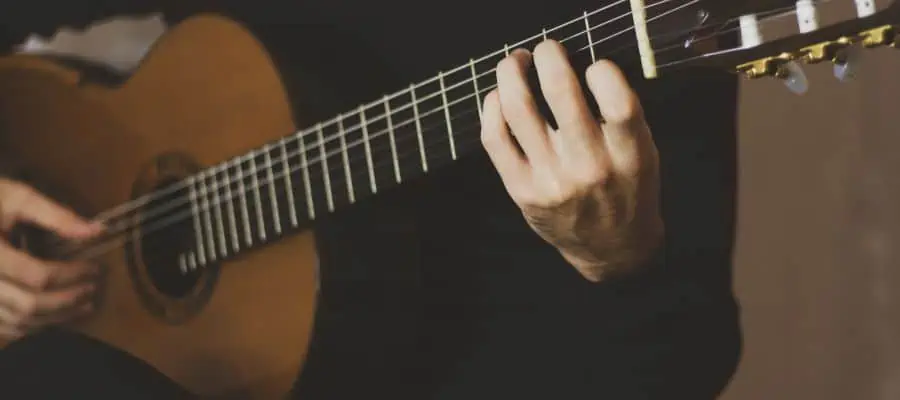Classical guitar is one of the most beautiful-sounding instruments, but it can be the trickiest guitar style to learn. Learning to play classical guitar takes discipline, dedication, and patience, offering a great musical journey that is both rewarding and fulfilling.
The classical guitar journey, generally, is not as hard as it is thought to be. After learning the fundamentals like proper posture, finger placements, and developing finger dexterity, the rest is straightforward. But, it must be noted that getting to advanced levels with classical guitar is harder than other guitar styles.
Learning classical guitar has three important pillars: comprehension, technique, and musical portrayal. It is a different path than electric or acoustic guitar and is slightly more challenging. But, with effort, discipline, and dedication, it is a slow-building yet rewarding progress.
In this article, I will discuss the challenges of learning classical guitar, how it differs from electric and acoustic guitar, and some tips to help you on the journey. Let’s dive deep into it!
What Makes Classical Guitar Hard to Learn?

The main challenges a classical guitar student faces are sitting position, fine-tuning left/right-hand position, nail shape, tone production, and sound projection, as well as breathing. All the small details in classical guitar play a large role in the end, along with the sound and technique.
Another challenge is the nylon strings. While nylon strings can be an advantage, as they are not as heavy as steel strings on fingers, the sound projection is lower with nylon strings. This means you will need a better technique to produce higher volume and quality sounds.
The next challenge is with sheet music reading. Most of the classical guitar repertoire comes in sheet music, which means you will have to learn how to read music to be able to play some beautiful pieces.
The classical guitar has a wider neck compared to electric and acoustic guitars. A wider neck means bigger stretches on the fingerboard, making things harder for the fretting hand.
3 Main Areas of Mastering Classical Guitar
While the classical guitar journey is more challenging than the acoustic or electric guitar journey in some senses, the real difference appears when you want to master the classical guitar. The virtuoso path for classical guitar takes huge dedication and discipline before anything.
Comprehension

The first area to think about when learning classical guitar is comprehension. It means being able to read music and understanding the ideas behind the pieces. It gives you the mindset of a classical guitar player, taking your playing to the next level.
It is relatively the easiest of the three main areas, as it is more related to the musical theory and understanding of what you are doing instead of the practice itself.
Technique

Unlike other guitar styles, classical guitar focuses heavily on building the nearly perfect fundamental technique. So, classical guitar technique is not something to be attained quickly. It is a practice of years and years of enhancing and upgrading your technique to reach the perfect sound.
That is why the classical guitar journey is not for the faint-hearted, as you need to stop being sloppy or forgiving with your technique. When you start to hear your mistakes clearly, maybe even more than necessary, it is when you are truly becoming a classical guitar player.
The right way to learn a classical guitar piece is to slow it down to try to play it perfectly. There might be some mistakes that can take days or weeks for you to fix. This is where the dedication and discipline comes in.
So, yes, mastering classical guitar techniques requires a perfectionist approach.
Musical Portrayal

When you get the comprehension and the technique to a point, it all comes down to musical portrayal. This is where the magic happens, and you combine your technique, comprehension, and everything you have learned to create a musical journey for the audience.
Your dynamics, emotions, and fluidity all play a role in the musical portrayal. After hard work on the technique and musical theory, getting back to the musical portrayal can be hard as repetitions of practices dehumanize and robotize the playing of many guitarists.
So, going for the virtuoso road for classical guitar and mastering it is a highly challenging journey that requires huge dedication and discipline. But to get to the intermediate level, you do not need to be this perfectionist and try to cross the ocean in a small boat.
Playing Classical Guitar Tips

- Playing classical guitar requires a different playing position than electric and acoustic guitars. With the headstock at eye level, a 45-degree guitar angle, as well as the body-guitar contact points at the chest, the right forearm in front of the elbow, and the right thigh, it is an odd position for beginners.
- Getting a footstool is a great idea for classical guitar players, as it raises one leg, most often the opposite foot from your plucking hand, to position the guitar on top of your leg. This way, your playing posture gets much better and makes everything easier for your hands.
- The right-hand position is crucial for classical guitar technique. For beginners, it is recommended to have it around the rosette with a straight wrist in line with the forearm. The arm also should have a natural and relaxed arch.
- The left hand should be straight in line with the forearm, and the wrist should be flat. Your left-hand knuckles should be in a parallel position with the frets.
- Spending some time to learn to read sheet music is a must if you are serious about your classical guitar journey. Most classical pieces come in music sheets, unlike acoustic or electric guitar pieces that come in tabs. So, to be able to play some iconic classical guitar pieces, you have to put time to learn music theory and sheet music.
- A 15-minute routine each day for finger exercises can go a long way in a few months. It will make your finger movements smooth and consistent, and you will realize that your hand coordination gets to higher levels.
- Finally, the best way to progress with your classical guitar journey, if you are a beginner or intermediate player, is to invest in a good teacher. A good teacher will direct you on your journey, show you the areas you have to focus on and teach you the most important stuff that you will carry on with you all through your journey.
Conclusion
In the end, classical guitar is actually harder than the acoustic or electric guitar styles. It possesses some challenges like the playing position, hand coordination, tone projection, sheet music reading, nylon strings, and wide neck, which are easier to bypass in other guitar styles.
However, like with any instrument, the challenge can be something to give up or something that makes things spicier to follow your passion. While classical guitar possesses challenges, the learning journey is not that much different from any other instrument. With dedication, discipline, and, most important of them all, passion, you can start to gain victories by playing some beautiful melodies in the short to mid-term.
If you found this article useful, you may want to save this pin below to your Guitar board.

Recent Posts
Some guitarists insist on buying an expensive amplifier with their electric guitar. They assume that this is a must for every type of guitarist out there. However, in some situations, this isn’t...
Top 50 Free Realistic Guitar VST Plugins With Sound Examples
As technology has rapidly advanced in the recent decade, computers are stealing more and more roles from physical musical instruments and accessories. Nowadays, you do not need expensive amps,...

